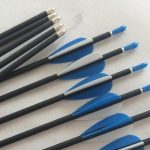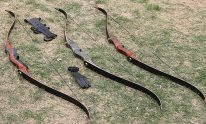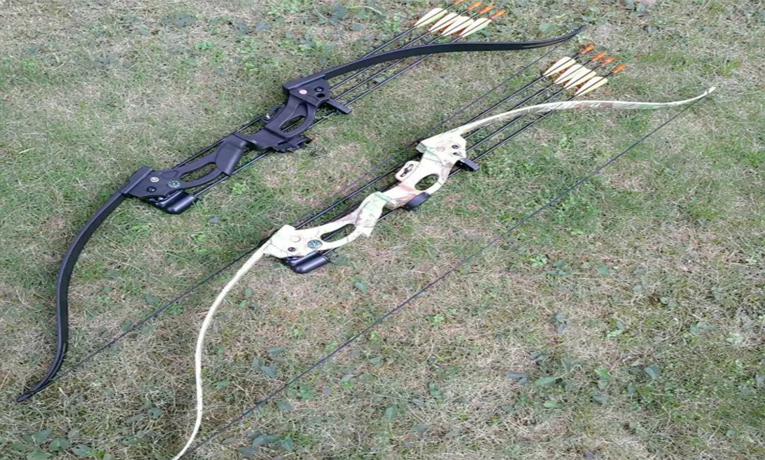
This article contains all of our recurve bow reviews and comparisons. A recurve bow expert has written each review, and each bow is also rated using a scale from 1 to 10. These ratings, remember, reflect only the opinion of the writer, so some of the information may be subjective. For a more targeted selection, refer to our list of the best recurve bows.
| Bow Model | Draw | Bow Weight | Bow Length | Take-down | Our Rating |
|---|---|---|---|---|---|
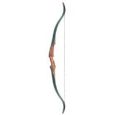 Read Review | 45 - 65 lbs. | 1.84 lbs. | 58" | No | 8.9/10 |
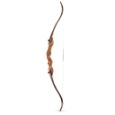 Read Review | 40, 45, 50, 55 lbs. | 2.84 lbs. | 60" | Yes | 7.8/10 |
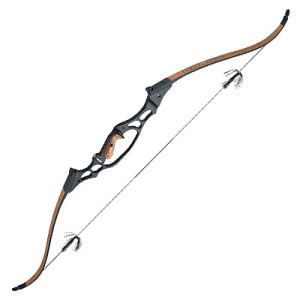 Our Review | 40-55 lbs. | 2.93 lbs. | 62" | Yes | 9.2/10 |
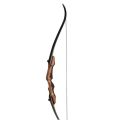 Read Review | 30-55 lbs. | 3.39 lbs. | 62" | Yes | 8.9/10 |
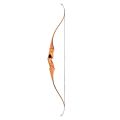 Our Review | 35-50 lbs. | 3.13 lbs. | 60" | No | 8.7/10 |
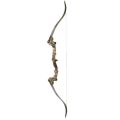 Read Review | 30-55 lbs. | 3.42 lbs. | 64" | Yes | 8.9/10 |
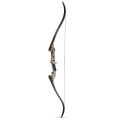 Our Review | 30-55 lbs. | 2.82 lbs. | 60" | Yes | 9/10 |
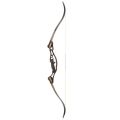 Read Review | 35-55 lbs. | 2.75 lbs. | 62" | Yes | 9/10 |
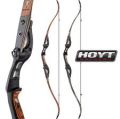 Read Review | 40-60 lbs. | 3.3 lbs. | 60" | Yes | 9.5/10 |
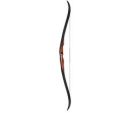 Read Review | 50-60 lbs. | 2.2 lbs. | 58" | No | 10/10 |
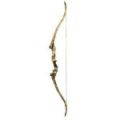 Read Review | 40 - 55 lbs. | 2.94 lbs. | 60" | Yes | 9.1/10 |
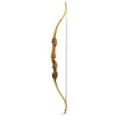 Read Review | 40 - 55 lbs | 2.98 lbs. | 60" | Yes | 8.6/10 |
What Can You Learn From Our Recurve Bow Reviews?
Many bow reviews tend to be written using long paragraphs, but our reviews follow a different pattern. Instead of descriptive paragraphs, we at archerychoice.com prefer to focus on bullet points, which most people find easier to read and comprehend. Each of our reviews contain the following sections:
Package Contents
In this section, you will learn which important items for your recurve bow are included in the box from the manufacturer. When a review is first posted, this information is going to be based on what came out of the box we received when we reviewed the bow. This is where you’ll find out whether or not the bow includes arrows, a bow stringer, or other accessories. Manufacturers do change package contents from time to time, choosing to include different arrows or not include arrows at all, etc. As we find out changes in package contents, we will update these section to reflect the most accurate information we can.
Assembly Instructions
Putting a recurve bow together is usually a pretty simple and easy process. Unless the recurve is a one-piece design, you will have to attach the limbs to the riser and then string the bow. This section will outline whether there are any difficulties in this process, or differences between assembling this recurve from others we have reviewed. In this section, you will also learn whether the manufacturer includes all of the necessary hardware and tools to assemble the bow, such as limb tightening bolts and Allen keys. We will also tell you whether a bow stringer is included in the box, or if you should make sure you already have one.
The Grip
In this section, we’ll look at the quality of the grip as well as how comfortable it is. If comfort should not be a main concern, we’ll explain that and also discuss what to look for in gripping gloves. We will often state that comfort shouldn’t be a big concern for a beginning archer because many recurve bows for beginning archers are designed more for simplicity of use than comfort.
Quality of the Riser
When we discuss the quality of the riser, we will talk about the ergonomics of the riser, the materials the riser is made out of and how they affect the performance of the bow, and maintenance tips for the riser. We will also discuss whether it is suitable for both left- and right-handed archers or if different models need to be purchased depending on the archer’s dominant hand.
Quality of the Limbs
In this section, we will look at what materials the limbs are made from. Whether the limbs are plastic, wood, fiberglass, or some other material, we will highlight the benefits and drawbacks of that material. You will also learn here the overall length of the recurve bow, as well as its optimal draw length.
What String To Use
Under this heading, we will let you know about the string included with the recurve bow, as well as recommended replacement strings. Strings never last forever, so we will try to give some sort of recommendation about how many shots you can expect to get from the factory string. Then, we will let you know what kind of string you should look for as a replacement and whether the recurve bow will stand up to the use of Flemish strings. Finally, look for a suggestion here as to how often you should restring the bow. We always recommend removing the string between shooting sessions, but we recognize that not everyone can do this, so we will typically recommend restringing the bow once a week; more often if the bow’s limbs seem to favor more frequent restringing.
Shooting Accuracy
Accuracy of a recurve bow is reflective of the shooter’s skill level and experience, but there are also factors about the bow itself that can help or hinder your accuracy. These characteristics include:
- The grip, especially how comfortable it is to hold and aim
- Vibration and hand torque, which can cause the arrow to fly off in a different direction from where you were aiming
- Limb twist, which can also affect your aim and the safety of the bow
- Tuning the bow, which often involves changing from one type of arrow to another in order to find the best arrow for your particular shooting technique.
This section of the review will point out which of the above things might affect your accuracy, as well as the overall accuracy of the bow itself in the hands of our expert shooters.
Arrows
Here, you’ll learn what type of arrows we recommend for each particular bow. This opinion is, of course, very subjective, but there are certain facts that tend to ring true across all bows and shooters. We’ll highlight what type of arrows we used, and include a link to our guide on choosing arrows specific to your capabilities, draw length, and type of shooting.
Accessories
One of the most important aspects of a bow is whether it is easy to fit with a sight, Berger button, stabilizer, and quiver. In this section of the review, we will let you know whether the bow is pre-drilled for these accessories, includes the proper bushings for installation of accessories, or if you will need a bow shop to drill the bow and install the accessories for you. If the bow does not seem suited at all for accessories (because of size, materials, etc.), we will let you know that in this section.
Hunting
Not every recurve bow is useful (or recommended) for hunting. Various factors, such as the accuracy, draw weight, size of the bow, overall weight of the bow, loudness of the bow and durability of the bow, can influence whether or not you should take the recurve bow into the bush for hunting. We will go over these factors, and give a recommendation as to whether or not this bow is suitable for hunters.
Beginners
A good beginner’s bow usually accepts accessories easily, features low or no vibration, and does not require much maintenance to keep it shooting accurately and comfortably. In this part of the review, we will let you know whether or not the recurve bow is useful for beginning archers, and why we think it is or is not recommended for beginners.
The Verdict
If included in the review, this section of the review will highlight the important facts in deciding whether or not to purchase this bow. We will highlight the pros and cons of the bow here, and summarize our thoughts about the bow. Sometimes, we will end with a tip on proper maintenance of the bow, such as polishing it from time to time.


